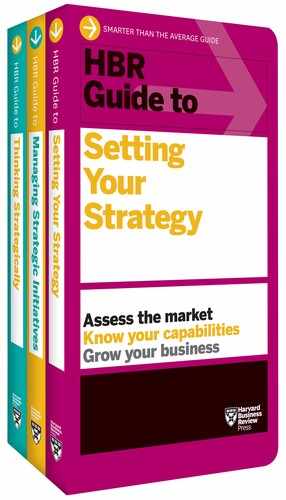CHAPTER 13
Seven Steps for Making Faster, Better Decisions
by Erik Larson
Managers make about three billion decisions each year, and almost all of them can be made better. The stakes for doing so are real: Decisions are the most powerful tool managers have for getting things done. While a tool like goal setting is aspirational, making decisions actually drives action. People usually do what they decide to do.
The good news is that there are ways to consistently make better decisions by using practices and technologies based on behavioral economics. In a three-month study of 100 managers, my team and I found that managers who made decisions using best practices achieved their expected results 90% of the time—and 40% of them exceeded expectations.
But although there’s great potential for using best practices to improve decision making, many organizations are not doing it. In a study of 500 managers and executives, we found that only 2% regularly apply best practices when making decisions, and few companies have systems in place to measure and improve decision making over time.
There are three reasons why this gap between potential and practice exists:
- History. Decision making in business has long been more art than science. That is partly because, until recently, most managers had relatively little access to accurate information. Few decision tools are widely used; the pros-and-cons list, popularized by Benjamin Franklin, is probably the most common—and it’s nearly 250 years old. And then there is the unfortunate circumstance that economics in the 20th century was based on the theory that people make rational choices when given good information, a theory proved to be somewhere between spotty and completely wrong, thanks to a revolution in behavioral economics, led by Nobel Prize winner Daniel Kahneman.
- Psychology. We are predictably irrational. Behavioral economists have uncovered a range of mental shortcuts and cognitive biases that distort our perceptions and hide better choices from us. Most business decisions are collaborative, which means groupthink and consensus work to compound our individual biases. Further, most business decisions are made under the stress of high uncertainty, so we often rely on gut feelings and intuition to reduce our mental discomfort.
- Technology. Enterprise software has automated many managerial tasks over the past 40 years. That shift has formed a foundation for better decision making, but it leaves the job unfinished. Behavioral economics shows that providing more complex and ambiguous information does little to help managers and their teams with the main challenges they must overcome to make better decisions.
So what can be done?
Through our work and experiments with thousands of decision makers, my team and I found that the most successful decision-making approach boils down to a simple checklist. But simply understanding the items in the list is not enough. This checklist must be used to be effective, since our biases don’t go away just because we know they are there.
Each time you face a decision, use these steps as a tool to counteract your biases:
- Write down five preexisting company goals or priorities that will be impacted by the decision. Focusing on what is important will help you avoid the rationalization trap of making up reasons for your choices after the fact.
- Write down at least three, but ideally four or more, realistic alternatives. It might take a little effort and creativity, but no other practice improves decision making more than expanding your choices.
- Write down the most important information you are missing. We risk ignoring what we don’t know because we are distracted by what we do know, especially in today’s information-rich businesses.
- Write down the impact your decision will have one year in the future. Telling a brief story of the expected outcome of your choice will help you identify similar scenarios that can provide useful perspective.
- Involve a team of at least two but no more than six stakeholders. Getting more perspectives reduces your bias and increases buy-in—but bigger groups have diminishing returns. According to research by Marcia Blenko, Michael Mankins, and Paul Rogers of Bain & Company, once you’ve reached seven people in your group, each additional member reduces decision effectiveness by 10%.1
- Write down what was decided, as well as why and how much the team supports the decision. Writing these things down increases commitment and establishes a basis to measure the results of the decision.
- Schedule a decision follow-up in one to two months. We often forget to check in when decisions are going poorly, missing the opportunity to make corrections and learn from what’s happened.
Our research has found that managers who regularly follow these seven steps save an average of 10 hours of discussion, decide 10 days faster, and improve the outcomes of their decisions by 20%.
We need a new, scalable approach to managing decision performance. It must replace the historical theory of rational choice. It must acknowledge that our psychology often leads us astray. And it must use simple, friendly tools like this one, designed to have an outsize impact on how managers and teams make decisions.
__________
Erik Larson is founder and CEO of Cloverpop, a cloud solution that applies behavioral economics and collaboration to help businesspeople make better decisions together. He is a graduate of MIT and Harvard Business School, a decorated U.S. Air Force officer, and an experienced technology executive based in San Francisco.
NOTE
1. Marcia W. Blenko, Michael C. Mankins, and Paul Rogers, Decide and Deliver (Boston: Harvard Business Review Press, 2010).
Adapted from “A Checklist for Making Faster, Better Decisions” on hbr.org, March 7, 2016 (product #H02PR2).
